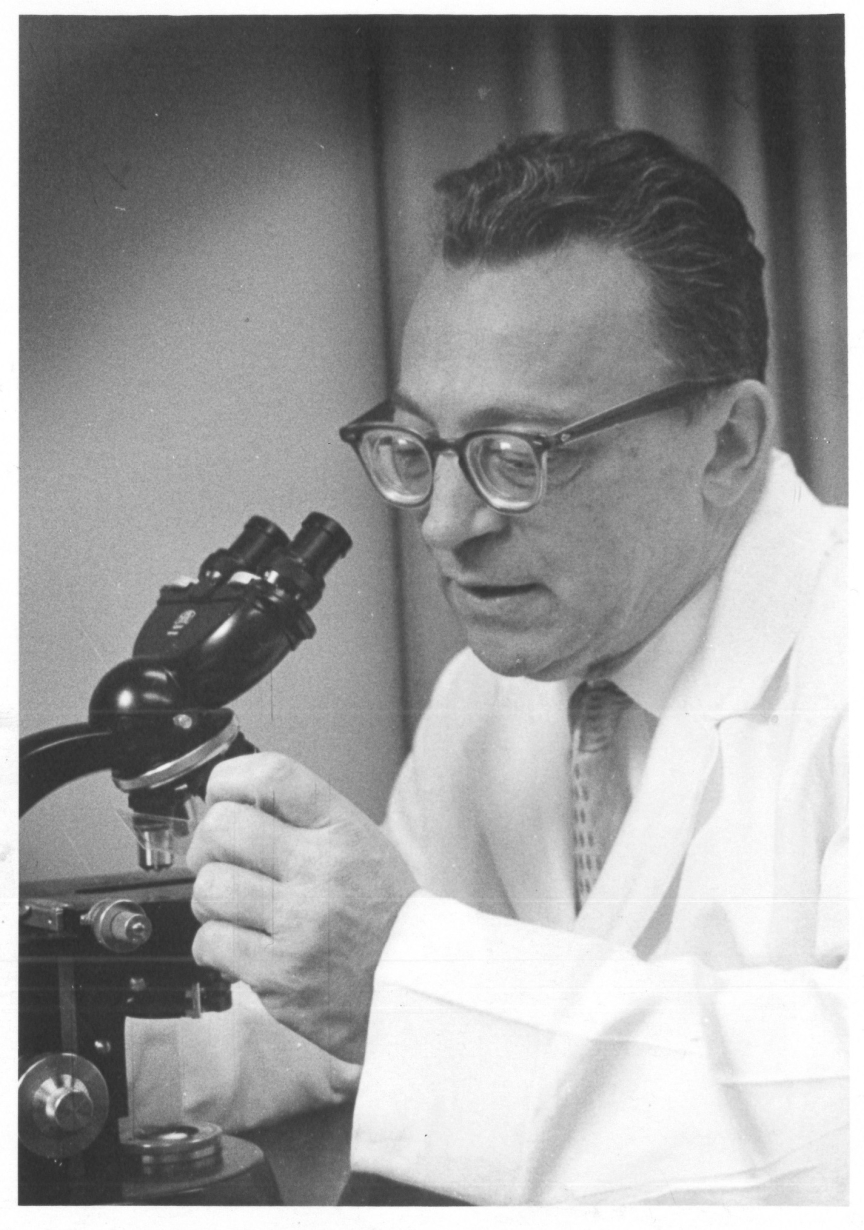Oscar Auerbach: A Professor at Rutgers New Jersey Medical School Who Proved the Case Against Tobacco Use
His work led to the 1964 U.S. Surgeon General Report directly linking smoking to lung cancer

'He did very meticulous autopsies and was able to correlate the changes that he saw with the known tobacco consumption that these individuals had been exposed to.'– Kenneth M. Klein

Smoking kills. Those two words are by now undeniable. But in the 1950s and ’60s, while there was mounting evidence that cigarettes directly cause lung cancer, there was just enough scientific doubt that the U.S. government felt unable to take action. Oscar Auerbach put that doubt to rest forever.
Auerbach was a pathologist who would serve for more than 30 years on the faculty of what is now Rutgers Biomedical and Health Sciences’ New Jersey Medical School. When he began investigating the effects of smoking, the vast majority of data on the subject came from epidemiological studies. Epidemiology measures the incidence of disease in large populations and then seeks to trace the cause.
All signs from epidemiological research pointed toward a strong link between lung cancers and smoking. But powerful tobacco companies, as well as states whose economies relied on tobacco farming, questioned the validity of that link. They argued that while a statistical association did exist between rates of smoking and the incidence of lung cancer, nobody had established a cause-and-effect relationship.
Kenneth M. Klein, a New Jersey Medical School professor, says when he was a young pathologist, the doubters went to great lengths to claim that tobacco and cancer were not linked. “Literally I heard people arguing, ‘Well, maybe it’s refrigerators,’ ” says Klein, who served alongside Auerbach on the school’s faculty for 21 years. “They said if you follow the incidence of lung cancer in the 20th century, it not only parallels the consumption of tobacco, but it also parallels when refrigerators became available and people started to buy refrigerators. How do you argue with that?”
Through intensive research, Oscar Auerbach found a way. The Veterans Administration cared for numerous vets who were dying from lung cancer—soldiers, sailors, and airmen who had smoked prolifically for years. Auerbach led a team that performed those patients’ autopsies, examining as many as 10 times the number of microscopic slides that a standard postmortem required. It was painstaking, labor-intensive work.
“He did very meticulous autopsies,” says Klein, “and was able to correlate the changes that he saw with the known tobacco consumption that these individuals had been exposed to. You see changes in bronchi, or you can see the tumor. And it’s very hard to refute when you see it directly.”
But Auerbach still had to do more. Science isn’t truly convinced of cause and effect until results can be replicated. That meant seeing in real time whether cigarette smoke induced lung disease. For that, with funding from sources that included the American Cancer Society, Auerbach studied the effects of smoking on lab animals whose lung tissues strongly resembled that of humans. What he had found in the veterans’ lungs was happening in those animals’ lungs. It was now indisputable that smoking causes lung cancer.
In 1964, U.S. Surgeon General Luther Terry released Smoking and Health: Report of the Advisory Committee to the Surgeon General of the Public Health Service, an account of the health effects of smoking that was so damning that he waited to issue his findings until the stock exchanges had closed—so as not to cause major market disruptions. The report, which cited Auerbach multiple times, directly linked smoking to lung cancer and concluded that “smoking is a health hazard of sufficient importance in the United States to warrant appropriate remedial action.”
From that report grew the health warnings and other legal measures that are credited with reducing per capita consumption of cigarettes by nearly 75 percent since the report was issued, according to the Centers for Disease Control and Prevention. A 2014 study funded by the National Cancer Institute estimates that 8 million premature deaths were averted in the 50 years following the Terry report, with average improvements in lifespan of 19 to 20 years.
Contributing as he did to this revolutionary improvement in public health was Auerbach’s crowning achievement, but he never slowed down. One week before his death in 1997, at age 92, he was still teaching New Jersey Medical School students.
He also wore his achievement with the utmost humility.
“He was a sweetheart of a person,” says Auerbach’s longtime colleague Klein. “You would never know just chatting with him in the hallway that this was an internationally renowned and acclaimed physician-scientist, who did so much.”
Read about more Rutgers Revolutionaries
Journalists are invited to contact Jeff Tolvin of Rutgers University News and Media Relations at jeff.tolvin@rutgers.edu or 973-972-4501.